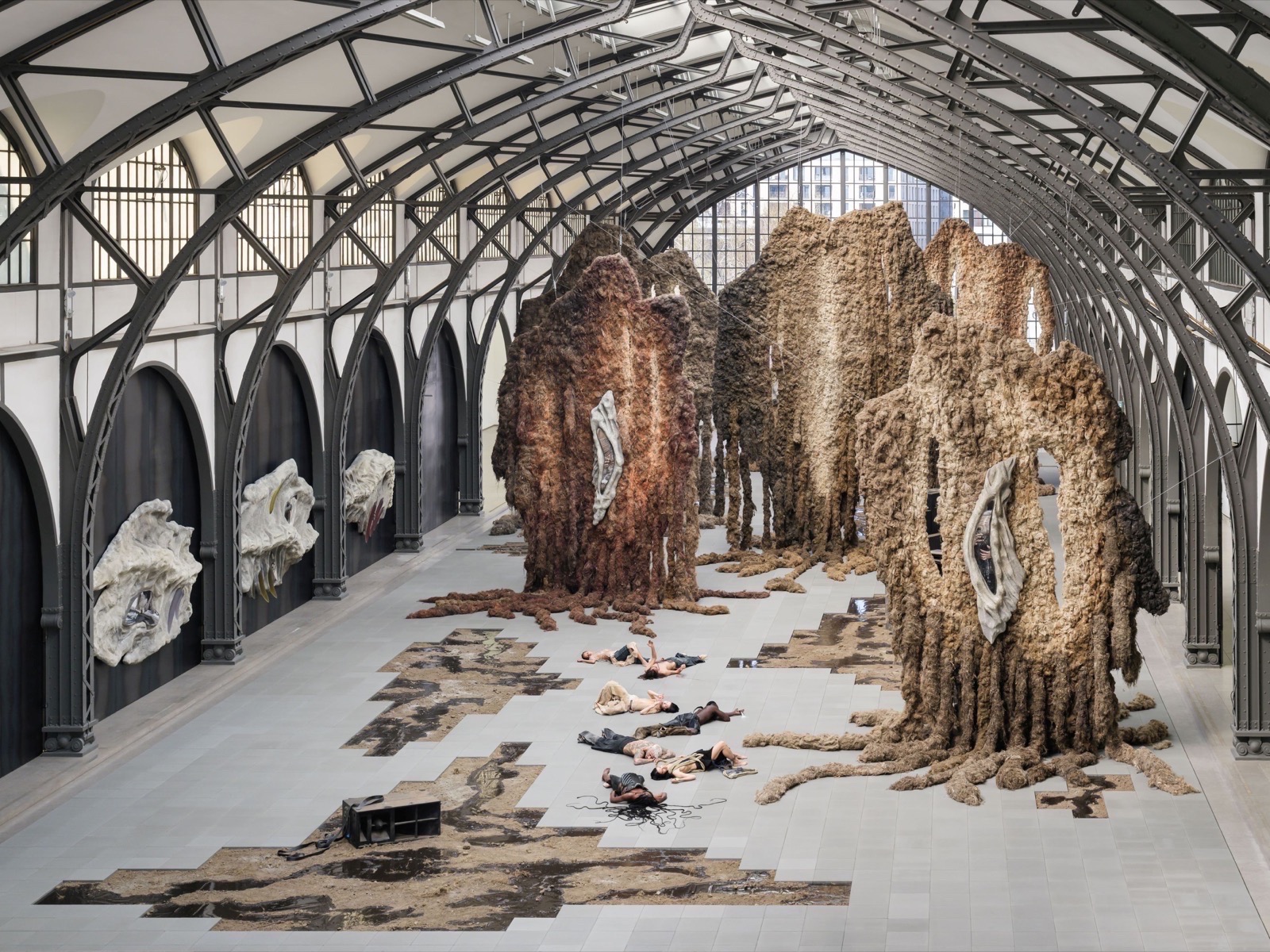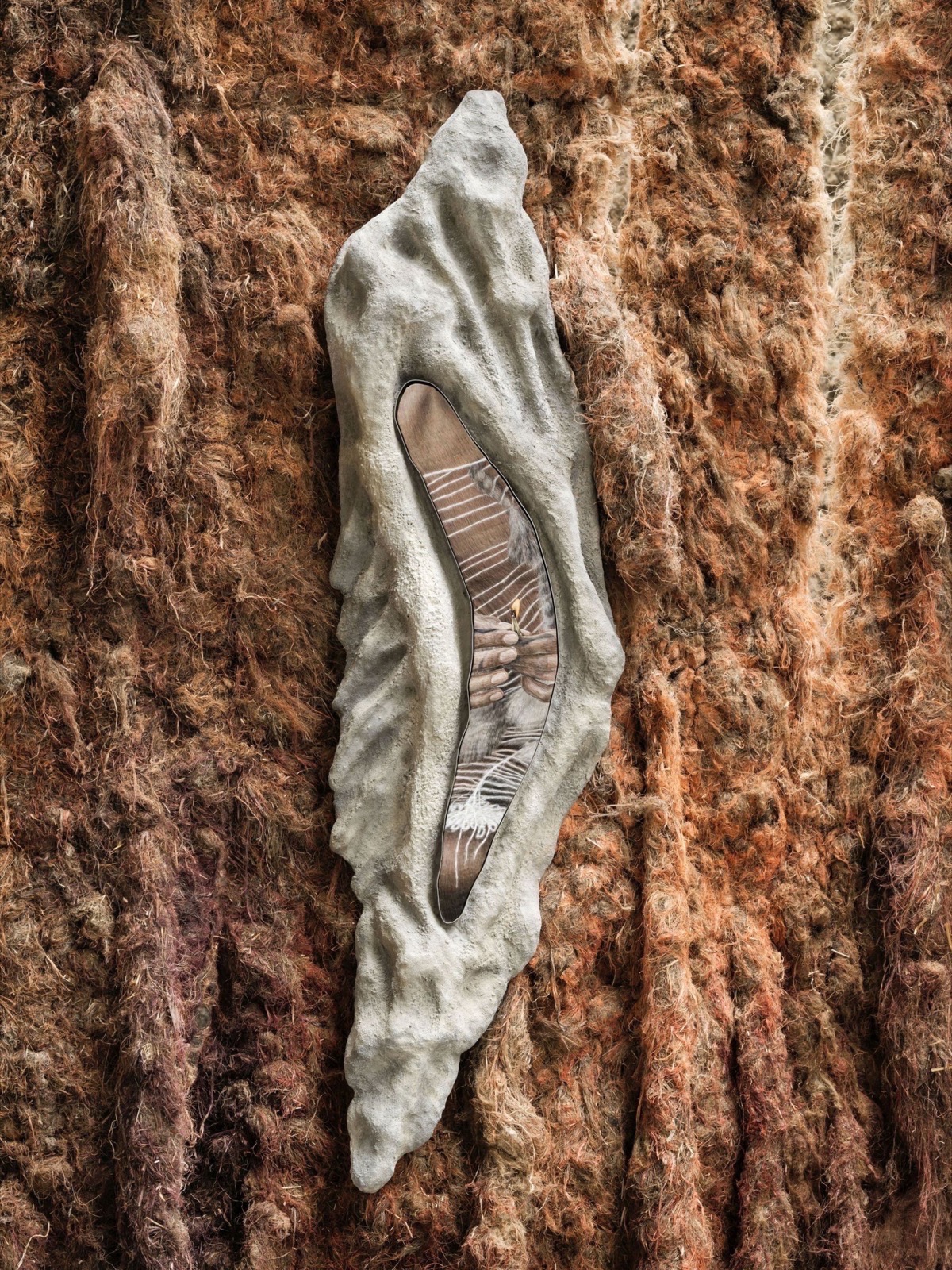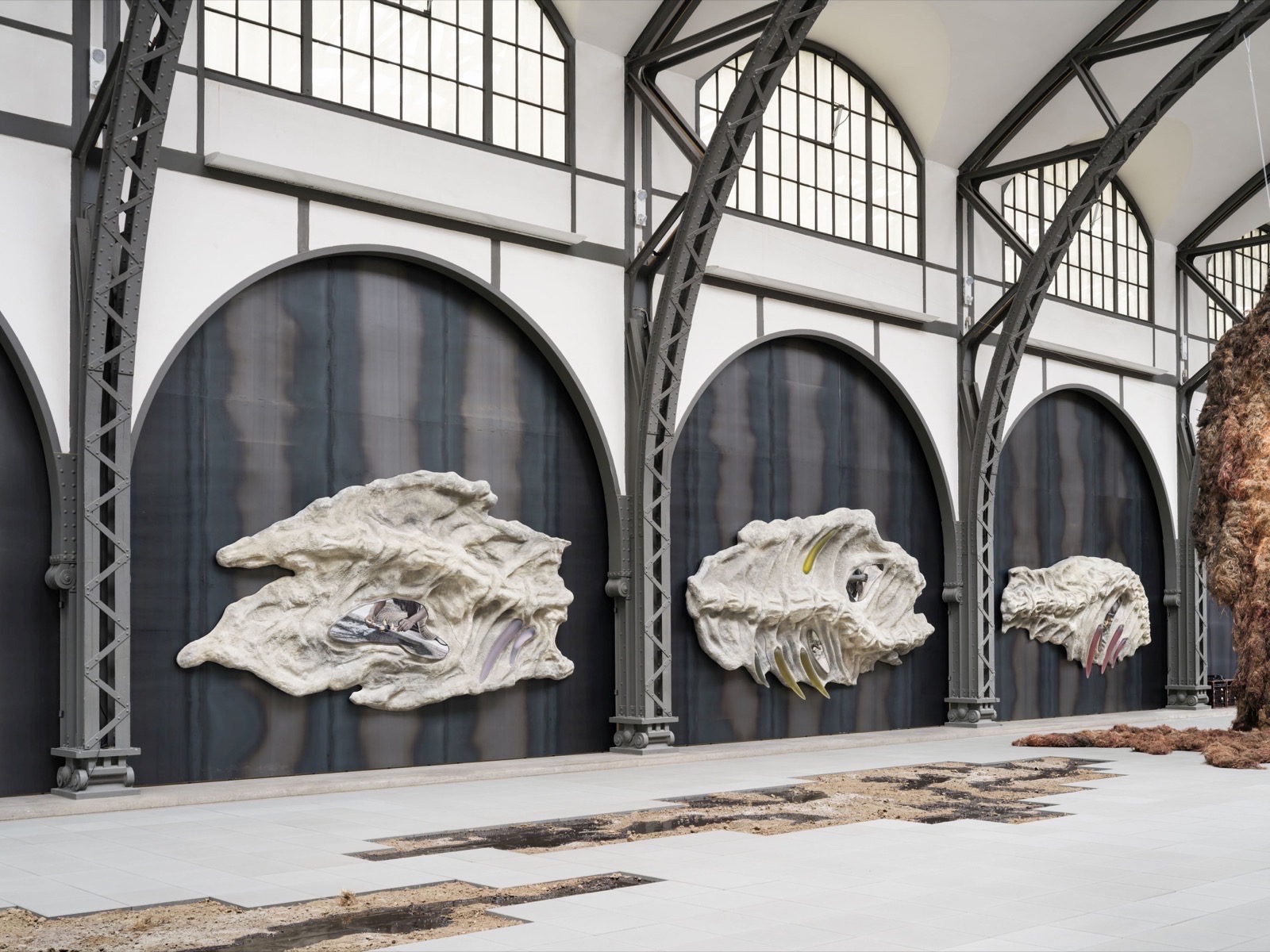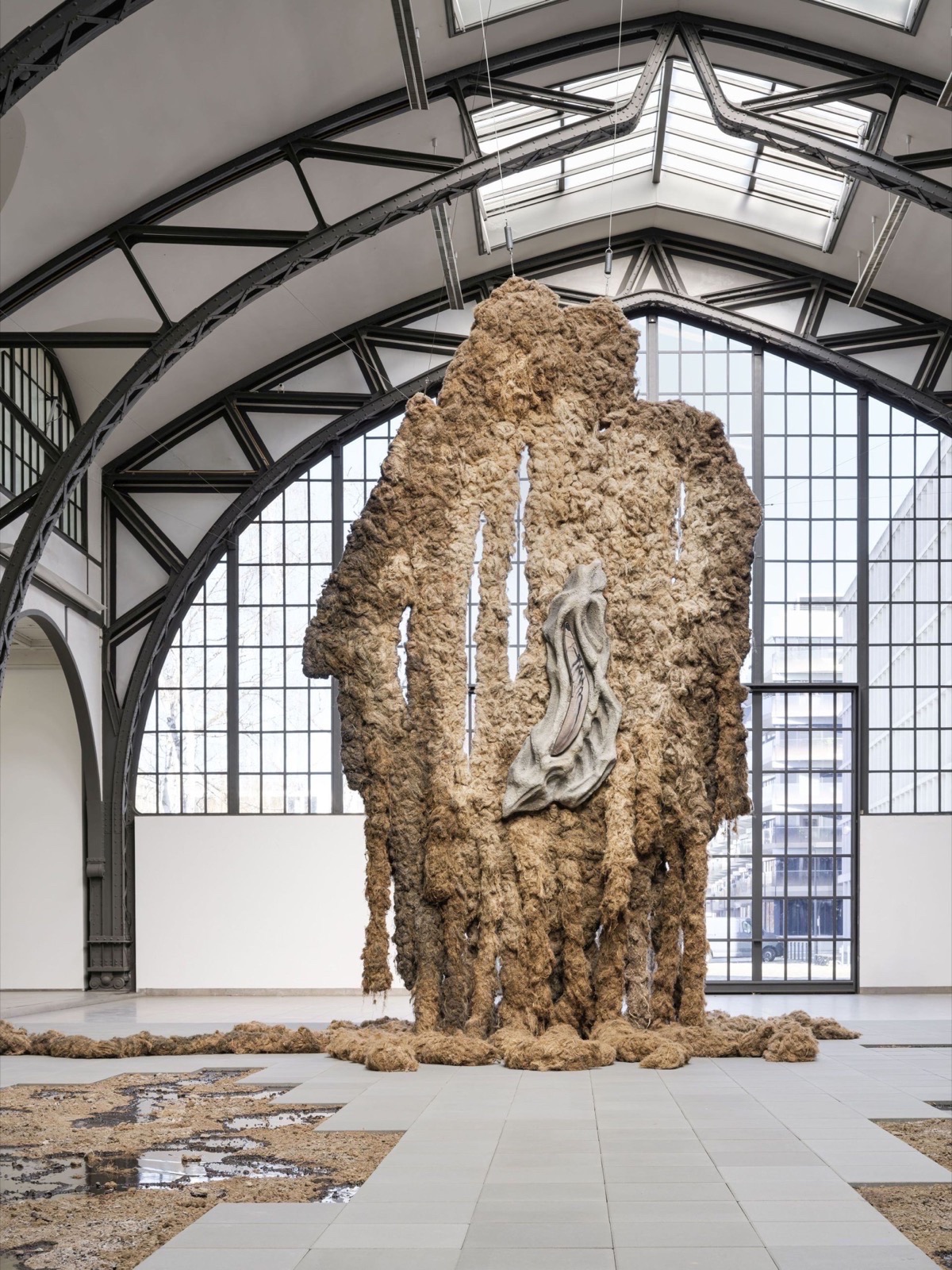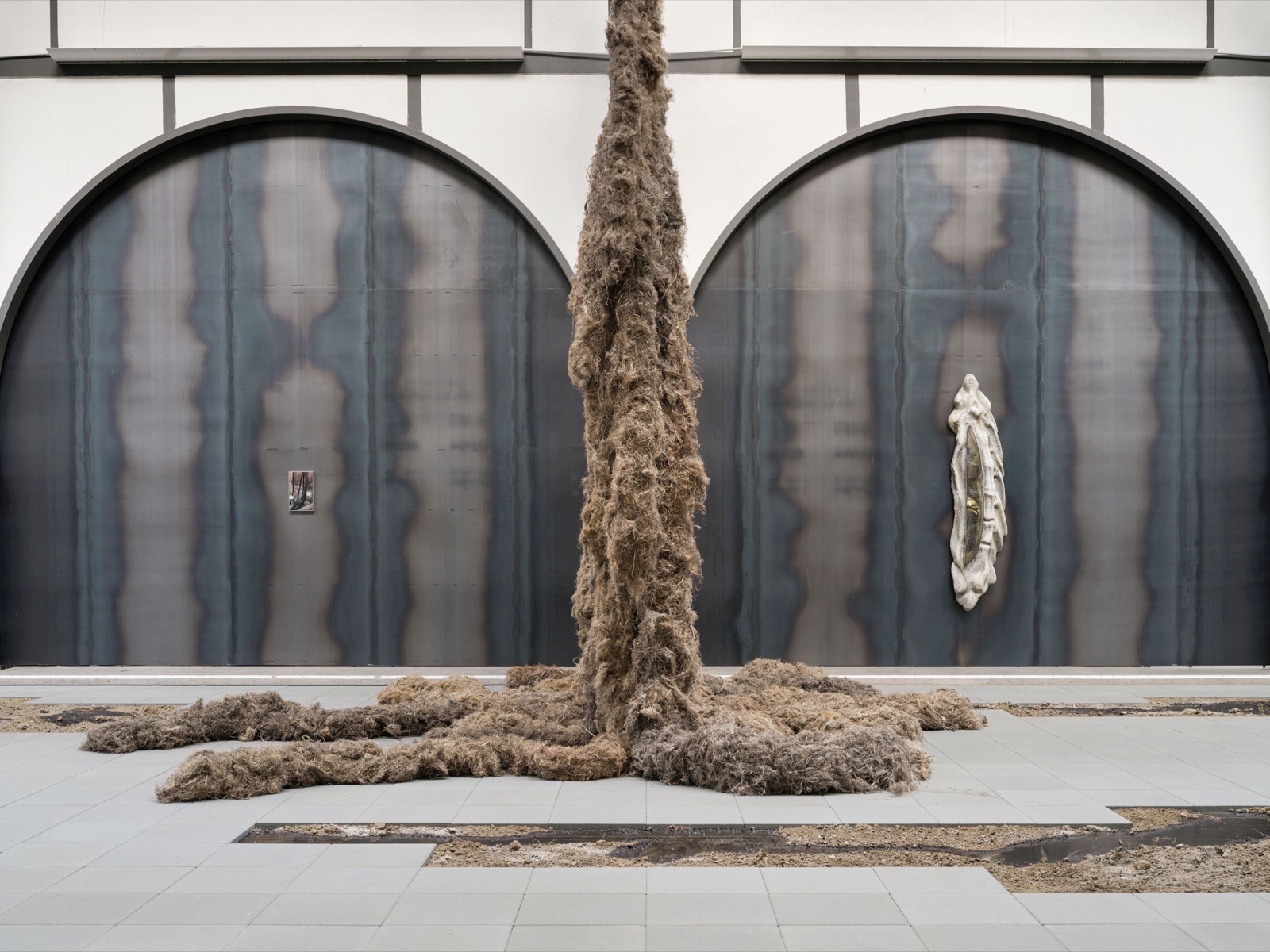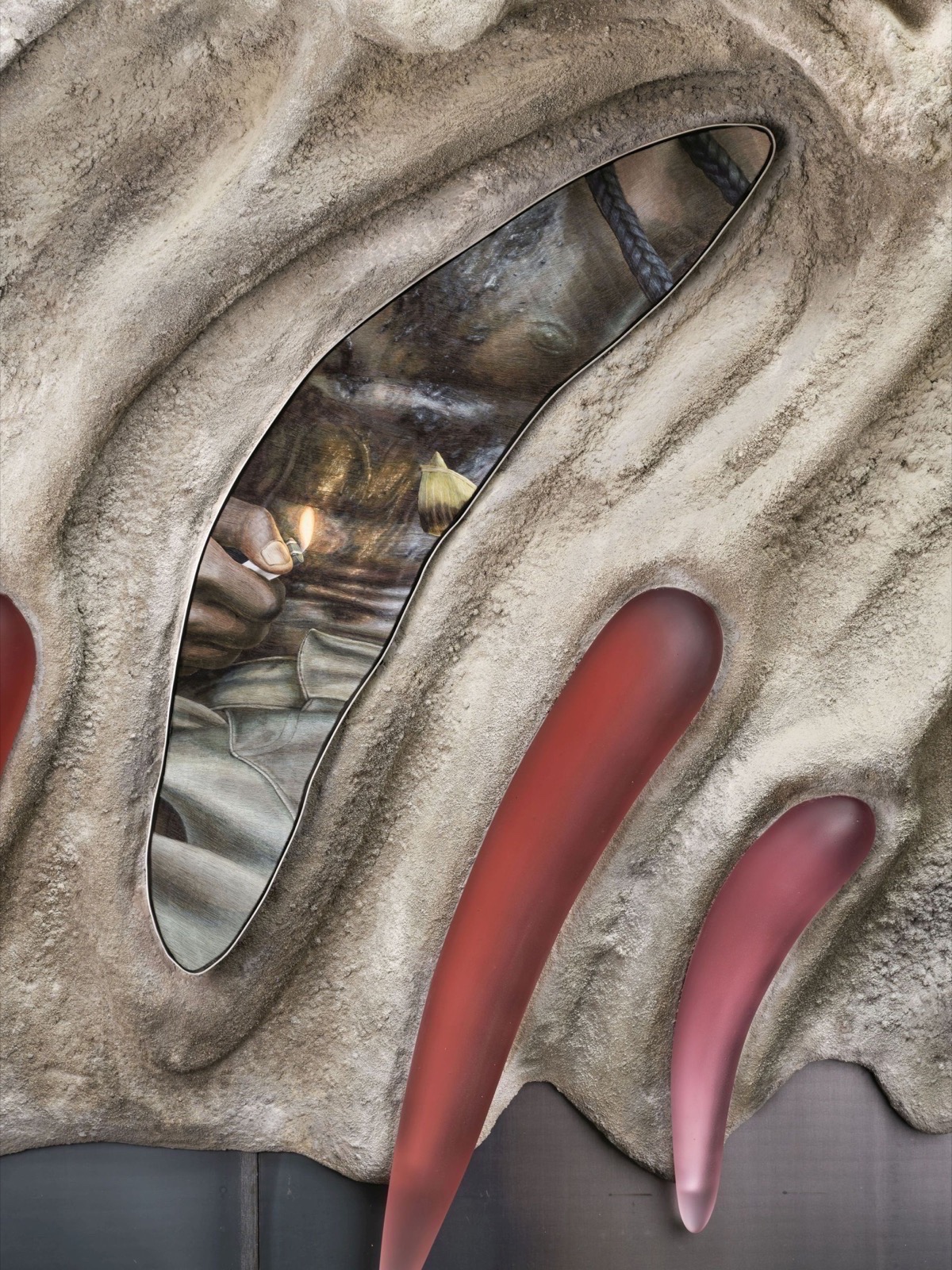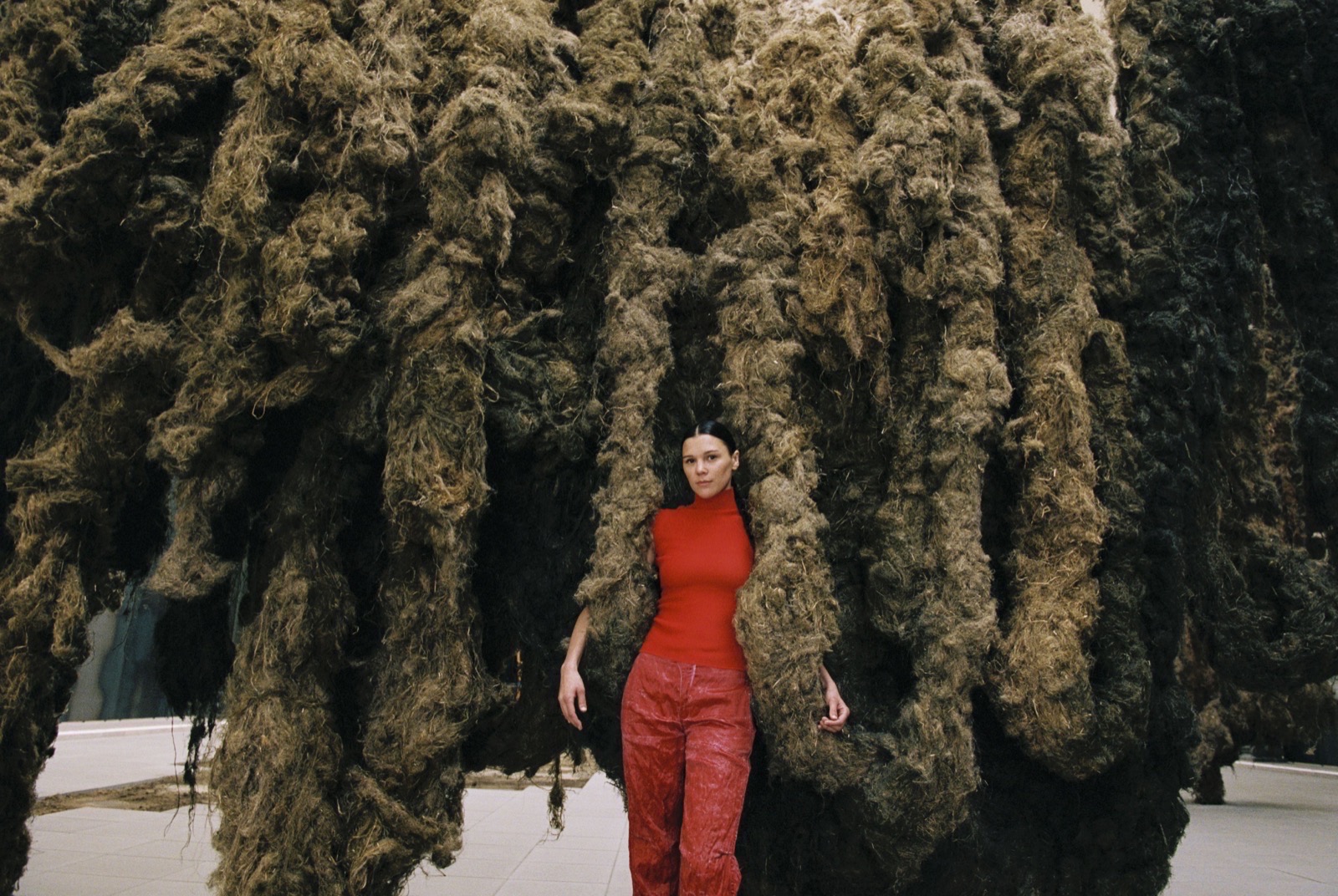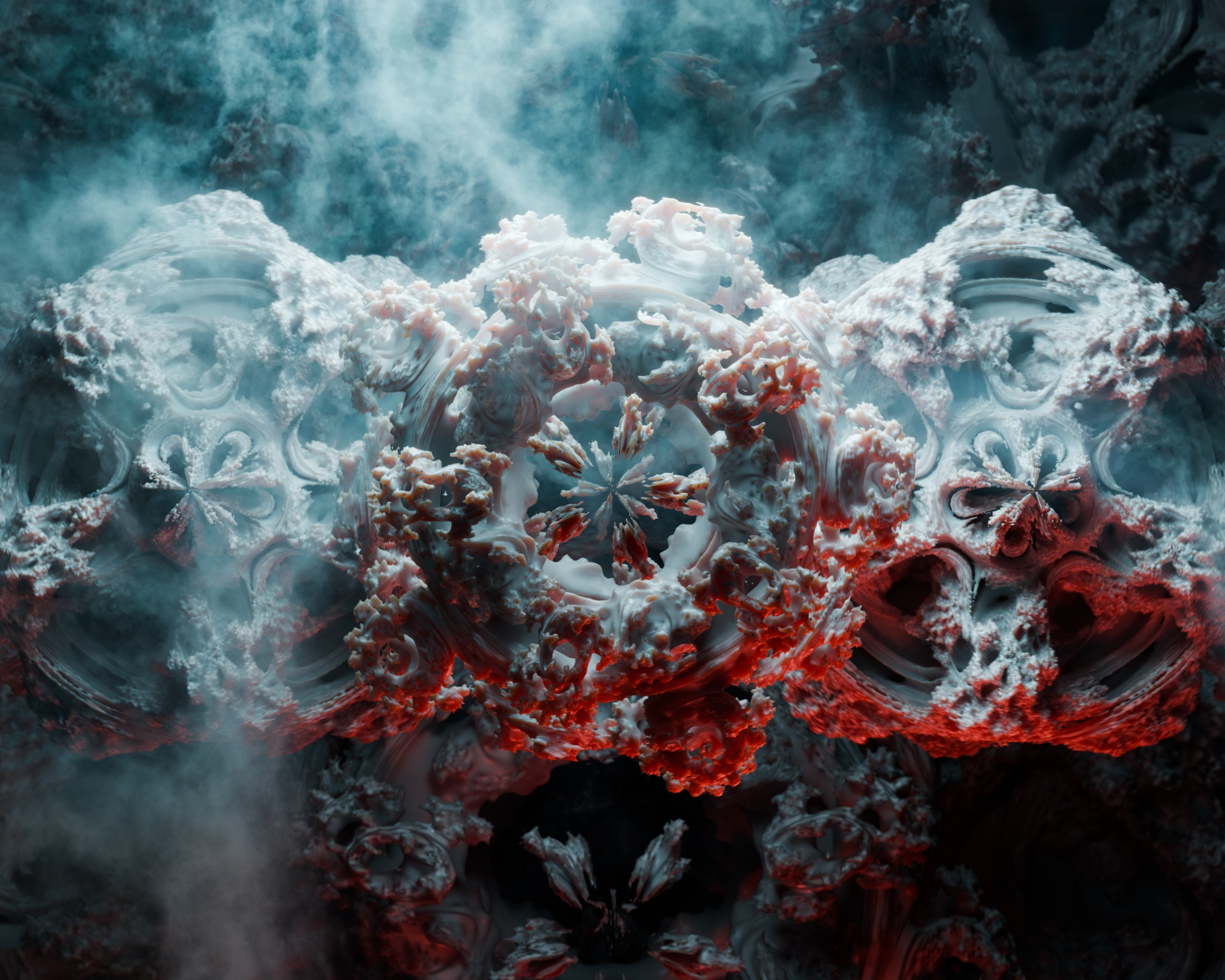Do you prefer to propose a historically and contextually grounded reading of the work, or would you rather leave room for open interpretation? Is embrace a complete narrative, or more of an open threshold?
Klára Hosnedlová: For me, embrace is definitely an open threshold, an invitation to feel, rather than to decode. While the work draws on historical and architectural contexts, I prefer to leave space for personal projection and sensory interpretation. The viewer’s presence completes the work.
Anna-Catharina Gebbers: I see embrace as a layered proposition—rooted in site-specific histories and material references to cultural histories from the region where Klára was born, but deliberately kept open to give space for visitors’ associations, experiences, and feelings. It doesn’t prescribe meaning like a linear narration, it’s rather a non-linear narration with several entry points; it creates conditions for resonance and personal emotions. We aimed to hold space for intimacy, ambiguity, and multiple readings, rather than a fixed narrative.
You have often described your art as a “living membrane.” Which aspects of embrace represent a turning point or a departure from your previous work?
Klára Hosnedlová: In embrace, the idea of a “living membrane” still exists. The main difference from earlier projects was, apart from the obvious change in scale, the implementation of a sound piece, adding another layer to the sensorial landscape. It was created in collaboration with Billy Bultheel and features folkloric songs interpreted by the women’s choir Lada, the voice of rapper Yzomandias, and instrumental sounds such as church bells. Sound is another immersive element that I definitely would like to use more often in future projects.
What were the main challenges you encountered during the realisation of the project? Were there constraints and limitations, or did the space naturally open up to the artistic vision?
Anna-Catharina G.: The main challenge in the Historic Hall is always its scale and complexity—its vastness, acoustics, and function as a transit space within the museum. It’s a place with a strong architectural authority and institutional weight. But rather than treating these as constraints, Klára responded to them with precision and care. The installation didn’t fight the space; it listened to it. Through layered materials, sound, and atmosphere, embrace slowly transformed the hall from a site of passage into a space of resonance. I feel fortunate to have been able to support her in feeling into the space and discussing the composition throughout the two years we worked together on this exhibition. It was a privilege to visit her and experience the surroundings of her hometown, which deeply influence her sensibility and artistic language. This closeness—between artist, space, and process—shaped embrace at every level.
The installation can be read as a form of utopian architecture. Do you think this kind of experimentation could be translated into everyday living spaces? What role does the environment play in shaping identity both personal and collective?
Klára Hosnedlová: I’m not very fond of the terms utopian or dystopian to describe my installations, as I see them more as reflections of something nuanced and real. That said, I understand why these words are often used. My work is deeply inspired by emotions and, as such, invites interpretation through specific intentions. However, for embrace as with all my projects, I tend to think of my installations as forms of speculative architecture, ones that gently blur the boundaries between body and space, public and private. Our environments shape us profoundly and persistently, but we also change them, sometimes drastically, influenced by political regimes, ecological crises, and more. My work focuses specifically on this duality, exploring alternative scenarios and possibilities that resonate with various architectural experiments, even if they are not direct inspirations.
Anna-Catharina Gebbers: Yes, embrace gestures toward a form of speculative architecture, one that is responsive, emotionally charged, and materially intelligent. It opens the question of how spaces could be designed not just for efficiency or aesthetics, but for sensing, remembering, and caring. I do believe aspects of this thinking can and should enter our everyday environments. The spaces we inhabit shape both personal and collective identity, often in unconscious ways. By experimenting within an institutional space like Hamburger Bahnhof, we can ask broader questions: How do we want to live? What do we want our surroundings to reflect back to us?
What did you aim to assert in the contemporary art scene through this project? Which key elements did you choose to emphasise, and what do you hope might be developed further in the future?
Anna-Catharina Gebbers: This exhibition addresses care, collaboration and sensitivity – both for the space and for lived experiences. One of the most important aspects for me was the emotional atmosphere that embrace creates – not through deliberate manipulation, but through material and spatial resonance. Drawing on Eva Illouz, who argues that emotions are not purely individual but shaped by our socialisation, upbringing, and cultural context, the installation can be seen as a call for respect for emotional diversity. We all relate differently because we’ve been formed differently. embrace invites respect for that multiplicity. I hope that I here can continue to support artistic practices that create space for complexity, intellectual AND emotional reflection, and forms of resistance within institutional contexts.
 https://www.nastymagazine.com/wp-content/uploads/2024/12/DSF8681_web.jpg
1200
1600
Editor Nasty
https://www.nastymagazine.com/wp-content/uploads/2015/02/new-logo-basker-WHITE4.png
Editor Nasty2024-12-18 11:01:572025-03-19 13:24:09Pig Tool / Jacobs’ Booth
https://www.nastymagazine.com/wp-content/uploads/2024/12/DSF8681_web.jpg
1200
1600
Editor Nasty
https://www.nastymagazine.com/wp-content/uploads/2015/02/new-logo-basker-WHITE4.png
Editor Nasty2024-12-18 11:01:572025-03-19 13:24:09Pig Tool / Jacobs’ Booth
